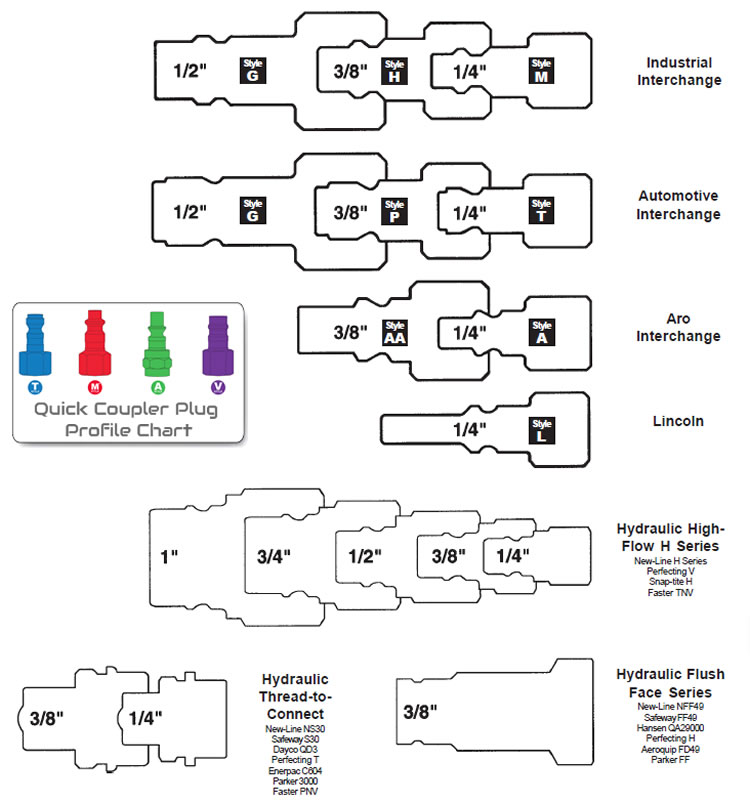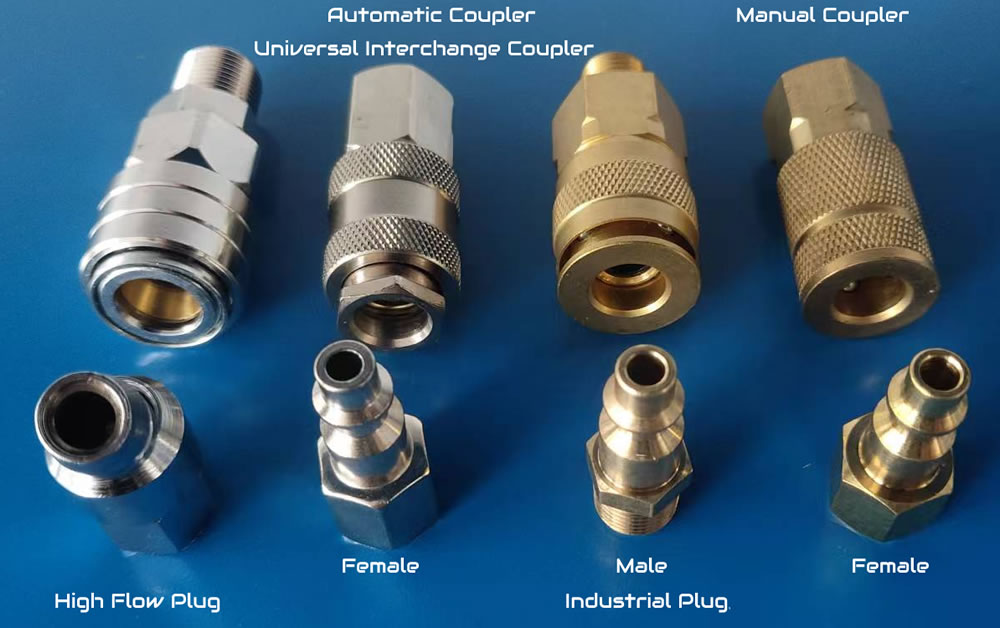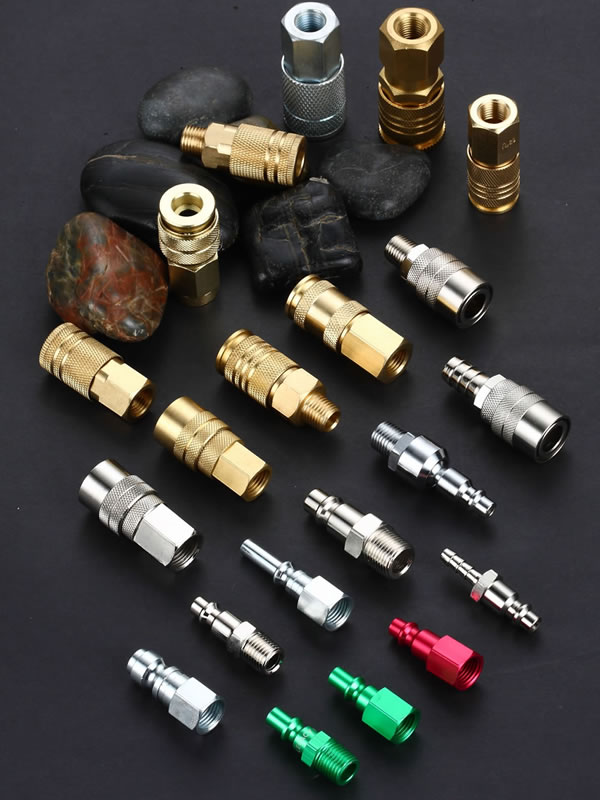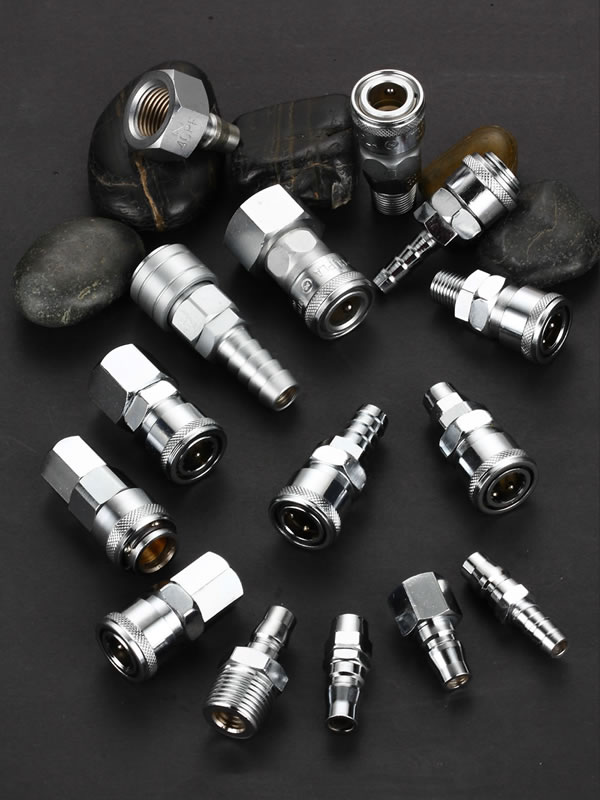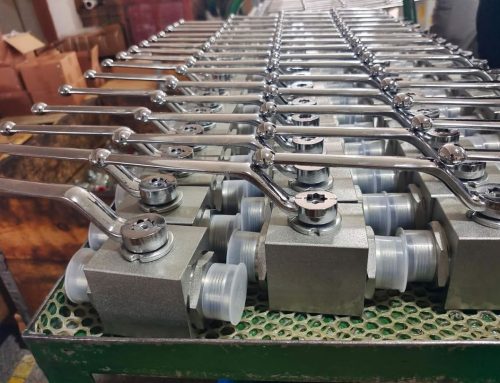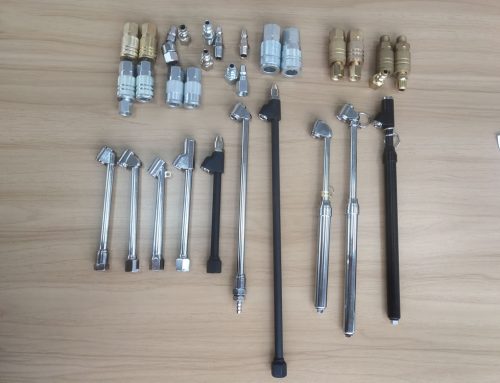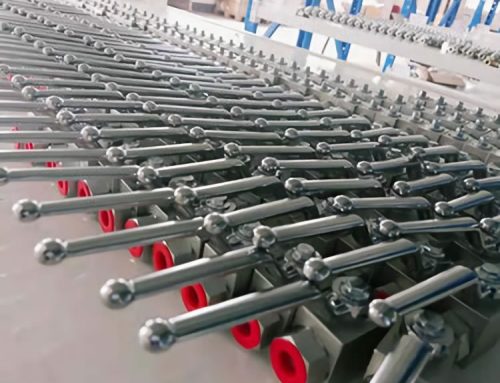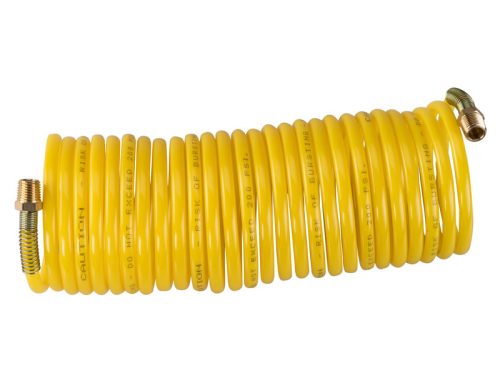Quick couplers are quick-disconnect fittings are a fast and easy means of joining various hydraulic or pneumatic system to quickly connect lines without losing fluid or fluid pressure. Quick couplers are designed to be connected and disconnected immediately without the use of tools, eliminating the need to close valves, bleed the system, recharge with fluid, and/or purge entrapped gas when parts are disconnected and replaced. For this reason, they are especially useful in critical or time-dependent production applications where speed is key. Quick couplers also save valuable time when used to construct or tear down plumbing systems.
Connection Types
When selecting quick couplers, the buyer must consider the connection types of both the quick coupler end and the ends connecting to the rest of the system.
Quick Coupler Connections
There are a few types of fast connections that fall under the domain of quick couplers.
Couplers
M Style and Universal Couplers
Each of the different plugs has a matching coupler. If you have that specific coupler, chances are it will only accept a plug with the same style.
The problem is most of the quick couplers look the same on the outside, so they are harder to identify than plugs. There is an somewhat accepted way of identifying them via counting the number of thin and thick “stripes” on the body of the coupler, but it’s pretty useless because not everybody adheres to it.
Also unless you have two couplers from a single manufacturer, one company’s thick stripe can look like another companies thin stripe. Plus you have to remember which marking are which style and the plugs don’t have matching markings.
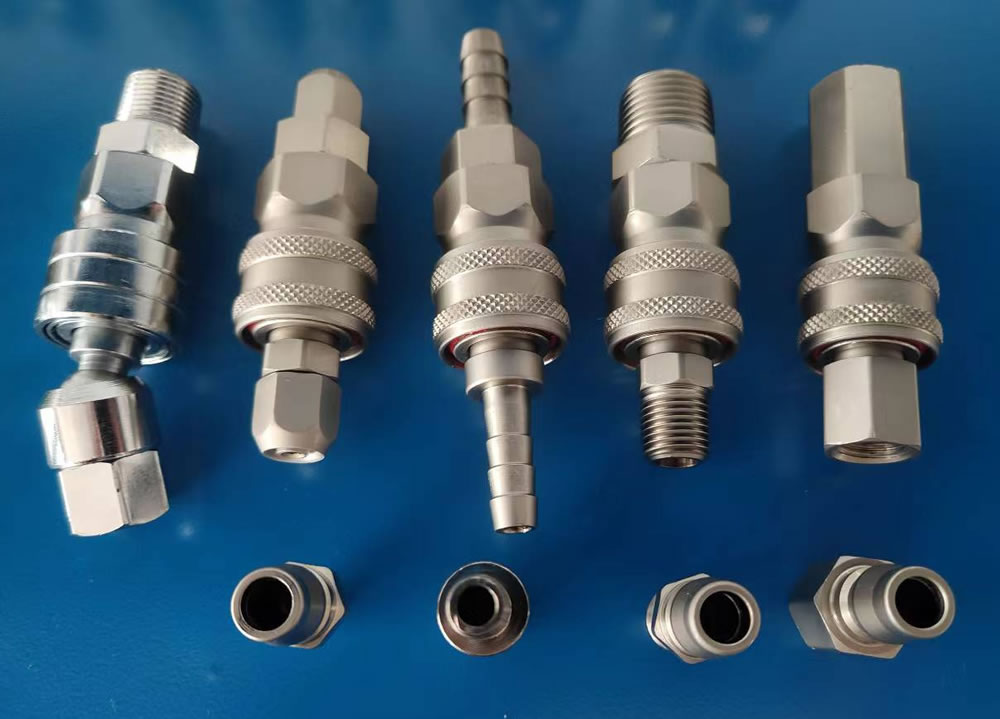
Then there are universal couplers. Some claim they only work with industrial and automotive style plugs, but others claim they work with industrial, automotive, and ARO type plugs.
There is also the Milton V-style coupler. It is designed to be the high flow mate to the Hi-Flow plug. Milton says that they are also designed to accept A, T, and M style plugs (if you are paying attention that’s ARO, automotive, and industrial plugs).
Another feature of couplers is that they can be either manual or automatic. You can tell the difference by looking at the photo above, the automatic coupler has the sleeve pulled back when there is no plug inserted.
Plugs
First off, there are different basic flow sizes, such as 1/4″, 3/8″ and 1/2″. This doesn’t refer to the size of fitting on the end of the plug, but rather the volume of air the plug can handle. For our purposes, we are going to concentrate on the 1/4″ basic flow size fittings, as this is the size that you are going to run into for most home and light commercial use.
Chances are you are going to run into either industrial or automotive type plugs in the 1/4″ basic flow size. They are the ones you are going to find at the Longwei Website. You might also run into ARO plugs in the 1/4″ basic flow size. There are different industrial, automotive, and ARO plugs for larger basic flow types like G-style for the industrial, but we won’t go into that here.
There are two other type of plugs in the 1/4″ basic flow size you might run in to: V-style (high flow) and Lincoln*.
Industrial Plug
They can be called by a few different names. For instance, this can be also be called a Milton plug, but more correctly it is Milton M-style. It is also known as type D or I/M style.
To make it even more confusing, Milton has a D-style plug, but that isn’t necessarily compatible with this style.
Automotive plug
Automotive style plug: Also know as a Truflate, Type T, or C-style.
High Flow Plug Opening
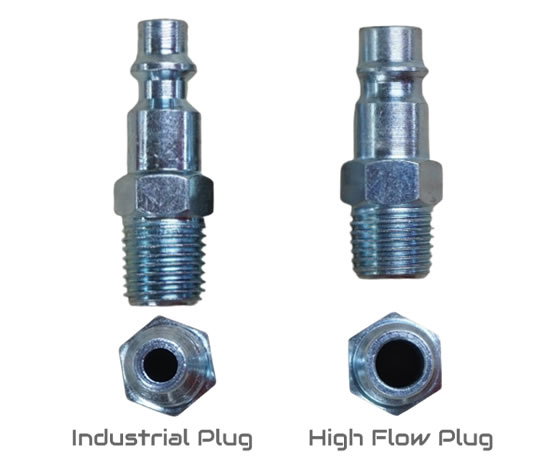
The V-style plug is a high flow style plug, it is similar to an industrial type plug, but it has a larger opening to accommodate higher airflow as you can see above. The photos here show a Milton V-style, but other companies also make high flow plugs.
ARO Plug
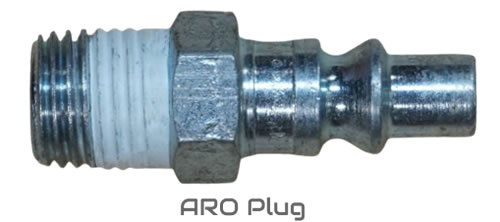
Lincoln Style Coupler and Plug
Then there is the ARO plug, above, which can also be called A-style or type B.
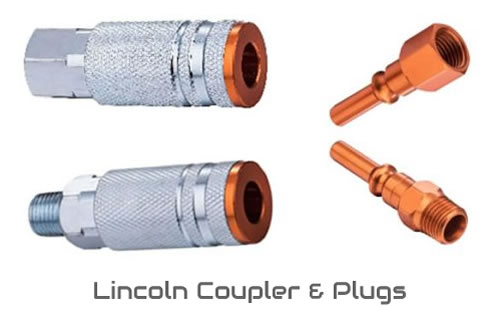
Finally there is the Lincoln style shown above.
What You Can Find in Longwei
Quick Connect Profile Chart
Quick Connect Couplings are a fast and easy means of joining various pneumatic and fluid transfer lines. An automatic shut-off valve in the coupler end allows the quick connects to be disengaged without needing a separate ball or line valve.
The size of the inlet thread is a good indication on the proper coupler size to use in order to maximize feasibility and flow. A short (3-10 ft) lead-in or whip hose coupled with solid male NPT ends will prolong coupler life as it will absorb vibration and reduce metal fatigue.
You can differentiate between various Interchange Series by observing the differences in the nipple/plug nose (see the below "Actual Size Profile Chart") as well as with differences in the coupler sleeve.
